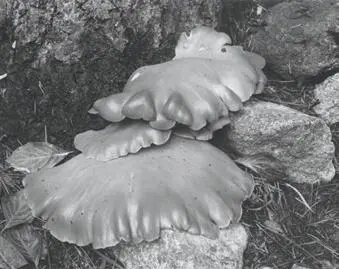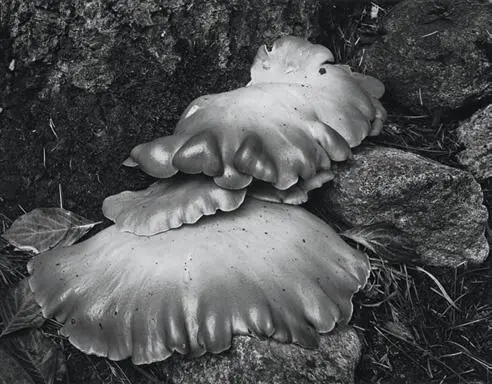Bruce Barnbaum - The Art of Photography - An Approach to Personal Expression
Здесь есть возможность читать онлайн «Bruce Barnbaum - The Art of Photography - An Approach to Personal Expression» весь текст электронной книги совершенно бесплатно (целиком полную версию без сокращений). В некоторых случаях можно слушать аудио, скачать через торрент в формате fb2 и присутствует краткое содержание. Жанр: Старинная литература, на английском языке. Описание произведения, (предисловие) а так же отзывы посетителей доступны на портале библиотеки ЛибКат.
- Название:The Art of Photography: An Approach to Personal Expression
- Автор:
- Жанр:
- Год:неизвестен
- ISBN:нет данных
- Рейтинг книги:5 / 5. Голосов: 1
-
Избранное:Добавить в избранное
- Отзывы:
-
Ваша оценка:
- 100
- 1
- 2
- 3
- 4
- 5
The Art of Photography: An Approach to Personal Expression: краткое содержание, описание и аннотация
Предлагаем к чтению аннотацию, описание, краткое содержание или предисловие (зависит от того, что написал сам автор книги «The Art of Photography: An Approach to Personal Expression»). Если вы не нашли необходимую информацию о книге — напишите в комментариях, мы постараемся отыскать её.
The Art of Photography: An Approach to Personal Expression — читать онлайн бесплатно полную книгу (весь текст) целиком
Ниже представлен текст книги, разбитый по страницам. Система сохранения места последней прочитанной страницы, позволяет с удобством читать онлайн бесплатно книгу «The Art of Photography: An Approach to Personal Expression», без необходимости каждый раз заново искать на чём Вы остановились. Поставьте закладку, и сможете в любой момент перейти на страницу, на которой закончили чтение.
Интервал:
Закладка:
As a simple example, suppose a landscape has low contrast separations within the land itself and the sky above is much brighter and also low contrast. Previous chapters on negative exposure and development may indicate that the obvious approach is to give ample exposure for the darker land within the frame, followed by reduced development of the exposed negative to bring the highlight densities (i.e., the bright sky) down to an easily printable range.
But by thinking ahead to the darkroom possibilities and fully integrating the process, I may decide to maintain overall contrast in the negative through normal development, or even increase contrast through extended negative development, then burn the sky extensively during printing. In this way I bring the tones of the sky down to my desired level, but in the process I maintain or increase the contrast in the land while also maintaining or increasing contrast in the sky. This produces a print that is alive throughout rather than one that has tonal separations throughout (Figure 10-5 and Figure 10-5).
The print may be more difficult to make using this approach, but it will be a more exciting, snappier print. By thinking ahead to the simple technique of burning a portion of the negative during the printing stage (i.e., giving a portion of the negative—the sky in this case—additional exposure under the enlarger), I can choose a different exposure/development regime than I would have without fully integrating the process by thinking ahead.
The same is true of dodging a portion of a print. If I consider areas of a scene that can be exposed and developed with an eye toward dodging (perhaps a deep shadow area possessing interesting and compositionally desirable detail), I may approach my exposure and development differently.


In Figure 10-6, the mushrooms dominate the image because of their placement and size, but the granite rocks—especially the one below the mushrooms—distract attention. Neither the light beige mushrooms nor the gray granite rocks would have responded to filtration. Darkroom printing was the only option to enhance the image. For Figure 10-6, I raised the contrast level to 50 units of magenta, printing the image substantially darker overall while dodging the tops of the two large fungi throughout the basic exposure. Then I burned the rocks, with special attention to the bright rock at the bottom. The mushrooms glow, yet the background retains detail .
Figure 10-6. Mushrooms, Yosemite Valley
If you employ this type of thinking, it will extend your use of the zone system into higher negative densities that you may have previously avoided, or into areas that you felt didn’t exist! Such thinking greatly expands your interpretive and artistic possibilities, and frees you from constraints that you might put on yourself.
I see no advantage to a straight print (i.e., one with no darkroom manipulation, such as dodging or burning) unless the tonal values of the scene miraculously fall into the perfect array of tonalities everywhere. Such perfection rarely occurs, so darkroom manipulation is almost always necessary. Ansel Adams knew this, for nearly all of his prints were burned or dodged, some quite heavily. I know this, as most of my prints are manipulated as necessary. I recommend that all photographers recognize this and use the tools available in the darkroom for their creative and artistic needs.
Burning can be done to darken highlight areas, mid-tone areas, or dark areas. Dodging can be done in any tonal area as well. The only consideration is this: what is needed to make the print look as good as it can look? When you decide what is needed, apply the technique. It’s an available, legitimate, creative technique, so use it. Remember, too, that the eye views the scene at many apertures as it scans from bright to dark areas, while the camera sees all areas at the single pre-chosen aperture. So burning or dodging may prove to be the only way to bring the image back to the way you saw it. Where is the manipulation—in your initial viewing of the scene or in your printing? It could be either one, or both! Who cares? The scene isn’t yours, but the print is always yours! So do what is needed. Every good photographer should recognize this.
How many photographers—beginners and advanced—have encountered the following situation in the darkroom? You print a landscape negative that includes a big, puffy, white cumulus cloud. The cloud, towering above the land, ends up blank white in the print. So you make another print, giving lots more exposure to the sky and cloud. Suddenly the cloud has rich tones within it. This tells you that the portions of the negative that printed blank white in the first print (i.e., with densities of Zone 9 or above) contained excellent, usable detail! In other words, without realizing it, you have already exposed and developed negatives that contained densities above Zone 9, and you have printed them successfully!
So you have already used much of the information that I’ve covered in this book. Now you fully understand it, so it won’t remain an obstacle to your thinking in the future. The higher zones are valuable, usable, and easily accessible. Don’t shy away from them, especially since you’ve already used them. This should break down your fear of the “extended zone system”.
Burning or dodging can bring out the compositional unity sought when the exposure was made. For example, I have a photograph of several enormous mushrooms draped over rocks at the base of a dead tree (see Figure 10-6 and Figure 10-6). The granite rocks were lighter than the mushrooms. Without darkroom manipulation, the rocks would compete with the mushrooms for attention and become distracting elements in the final print.
To achieve my desired print, I dodged the center of the mushrooms during the basic exposure to lighten them considerably while still retaining detail and texture. Then I burned everything around the mushrooms—even the bottoms of the mushrooms—except the tree trunk, which was already dark. I used a cardboard with a hole near the edge and rotated the hole around the outer edge of the mushrooms. I gave the rocks particular emphasis by laying one or two cardboards atop the hole to shape it like the rocks and then burning each rock successively. Ultimately the rocks were lowered in tone to deep, rich grays (Zones 2–5), while the assorted twigs, leaves, pine needles, and dirt had similar deep values.
Now the mushrooms appear to glow with light, and the viewer’s attention is drawn to them without distraction from the surrounding objects. The burning around the mushrooms amounts to nearly 300 percent additional exposure beyond the basic exposure. But the centers of the mushrooms were dodged during the basic exposure, so the surrounding areas actually received about 500 percent more exposure than the centers of the mushrooms. The darkroom manipulations are not apparent in the final print (though they are dramatic when compared with the straight print). It is not an overstatement to say that the compositional unity of this print was largely created in the darkroom.
The options you have in the darkroom include dodging and burning, contrast level of paper, two-solution contrast control, and your choice of paper. Each option deserves careful thought. The goal is to achieve a print that enhances the effect you desire. Some prints should sparkle; they should glow. They should be alive with light and luminosity. Others should be subdued and quiet, yet still glow with soft light. The contrast level must be chosen with the mood of the final print in mind. Some prints require high contrast; some demand low contrast. Some should be dominated by large, light areas; some by dark areas; and some by mid-tones. When a print appears flat, a higher contrast filter may solve the problem; but a little burning and dodging with the same contrast level may be a better solution.
Читать дальшеИнтервал:
Закладка:
Похожие книги на «The Art of Photography: An Approach to Personal Expression»
Представляем Вашему вниманию похожие книги на «The Art of Photography: An Approach to Personal Expression» списком для выбора. Мы отобрали схожую по названию и смыслу литературу в надежде предоставить читателям больше вариантов отыскать новые, интересные, ещё непрочитанные произведения.
Обсуждение, отзывы о книге «The Art of Photography: An Approach to Personal Expression» и просто собственные мнения читателей. Оставьте ваши комментарии, напишите, что Вы думаете о произведении, его смысле или главных героях. Укажите что конкретно понравилось, а что нет, и почему Вы так считаете.












